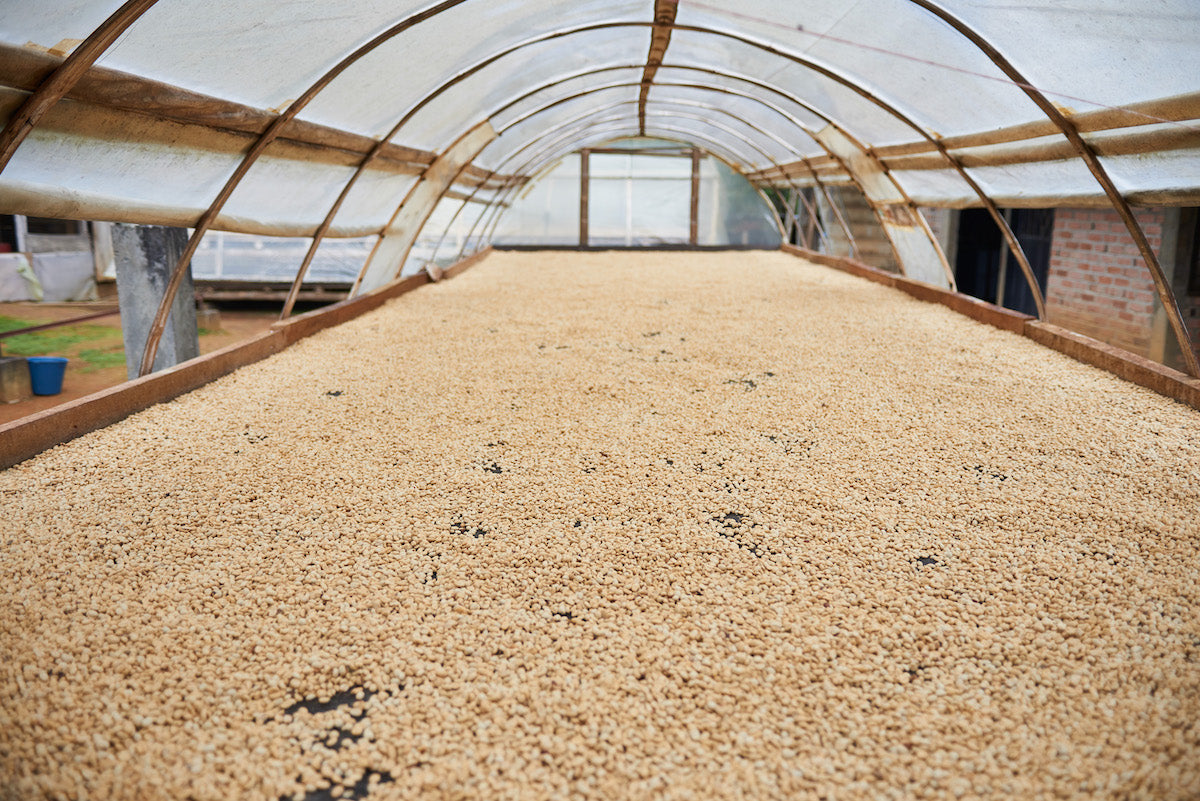
In the world of coffee, Colombia's reputation precedes it, with its name often being synonymous with quality. Colombian coffee is recognised globally for its distinctive taste and aroma, and its production process is a major factor in its unique flavour profile. In this blog post we will provide a comprehensive overview of coffee production in Colombia, detailing the journey from bean to cup.
The History of Colombian Coffee
It is believed that Jesuit priests first introduced coffee to Colombia in the late 16th century. However, it wasn't until the early 19th century that coffee production began on a commercial scale. Despite the industry's relatively late start, it grew swiftly. By the 20th century, coffee had become Colombia's primary export, accounting for over half of the country's total exports.
Geographical and Climatic Factors
Colombia's unique geographical location and climate provide an ideal environment for coffee cultivation. Nestled between two oceans and crossed by the Andes mountains, Colombia has a diverse range of microclimates that are perfect for growing high-quality Arabica beans.
Most of Colombia's coffee is grown in the "Coffee Cultural Landscape," an area spanning the departments of Caldas, Quindío, and Risaralda, often referred to as the Coffee Triangle. Additionally, other regions like Antioquia, Nariño, and Huila contribute significantly to the country's coffee production.
The high altitude of these regions (usually between 1,200 and 1,800 meters above sea level), coupled with the stable, tropical climate, ensures a steady supply of coffee cherries throughout the year. This allows for two harvest seasons, the main one from September to December, and a smaller one, known as the 'mitaca,' from April to June.
Coffee Cultivation and Processing
In Colombia, coffee farming is more than just an agricultural activity; it's a way of life. There are nearly 600,000 coffee farms in the country, most of them small, family-owned enterprises. Coffee is typically grown in the shade of taller trees, which not only protects the plants but also helps to preserve the rich biodiversity of these regions.
Once the coffee cherries are ripe, they are hand-picked, ensuring that only the highest quality beans are selected. This labor-intensive process, though time-consuming, is a major factor in the superior quality of Colombian coffee.
After picking, the coffee cherries are processed using either the wet (washed) or dry (natural) method. In Colombia, the wet method is more commonly used. It involves removing the pulp and skin from the cherry, fermenting the remaining mucilage-covered bean, washing it, and then drying it under the sun or in mechanical dryers. This method enhances the acidity and brightness of the coffee, characteristics that Colombian coffee is well-known for.
Quality Control and the National Federation of Coffee Growers of Colombia (FNC)
Founded in 1927, the FNC is a non-profit organisation that represents over 500,000 Colombian coffee growers. The FNC is committed to improving the quality of Colombian coffee and the livelihood of its farmers.
The FNC oversees strict quality control measures to maintain the high standards of Colombian coffee. It also supports farmers with training, financial aid, and technical assistance. The FNC's commitment to quality and sustainability has played a significant role in establishing Colombian coffee's reputation on the global stage.
Colombian Coffee in the Global Market
Colombia is a major player in the global coffee industry, consistently ranking as the third-largest coffee producer worldwide, following Brazil and Vietnam. However, while it might not hold the top spot in terms of sheer volume, Colombian coffee is unparalleled in terms of quality and is a staple in the specialty coffee scene.
The exceptional quality of Colombian coffee beans is appreciated by coffee connoisseurs worldwide, and these beans are sought after for their well-balanced flavour profile, characterised by a bright acidity, medium body, and fruity, nutty notes. Whether served as a single-origin offering or used as a key component in a blend, Colombian coffee provides a satisfying cup that both comforts and invigorates.
Moreover, Colombian coffee has earned a reputation for its sustainability and ethical sourcing, thanks to the efforts of the National Federation of Coffee Growers of Colombia (FNC). Many Colombian coffee farms have Rainforest Alliance and Fair Trade certifications, signalling their commitment to environmentally friendly practices and fair wages for workers.
Future Outlook
The future of Colombian coffee production looks promising, with a strong focus on both quality and sustainability. Despite the challenges posed by climate change, Colombian coffee growers remain resilient and innovative, exploring new cultivation techniques and coffee varietals to adapt to changing conditions.
The Colombian coffee industry is also striving to increase the value of its coffee through initiatives like the "Café de Colombia" Protected Designation of Origin (PDO), which guarantees the origin and quality of its coffee, and by promoting specialty coffee production and direct trade relationships with buyers. These efforts not only increase the profitability of Colombian coffee but also ensure that consumers continue to enjoy the unique and delightful flavour of authentic Colombian coffee.
Conclusion
Coffee is an integral part of Colombia's cultural identity and economy. Its production is a testament to the country's rich biodiversity, the hard work of its coffee growers, and the dedication to preserving quality and sustainability at every stage of the process. The journey of Colombian coffee, from the high-altitude farms of the Andes to cups around the world, is a story of passion, resilience, and the pursuit of excellence. As we sip our Colombian brew, we're not just enjoying a great cup of coffee; we're partaking in a rich tradition that has been refined over centuries.
Photo by: Cafe Imports
